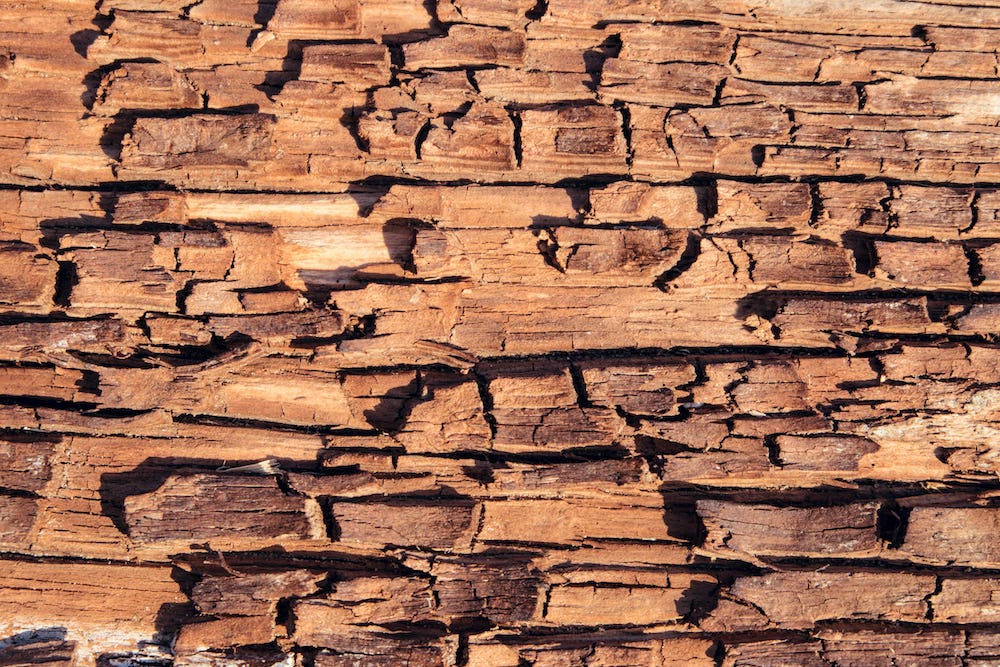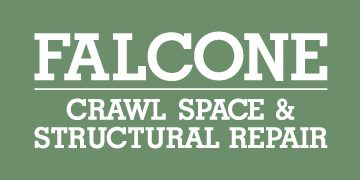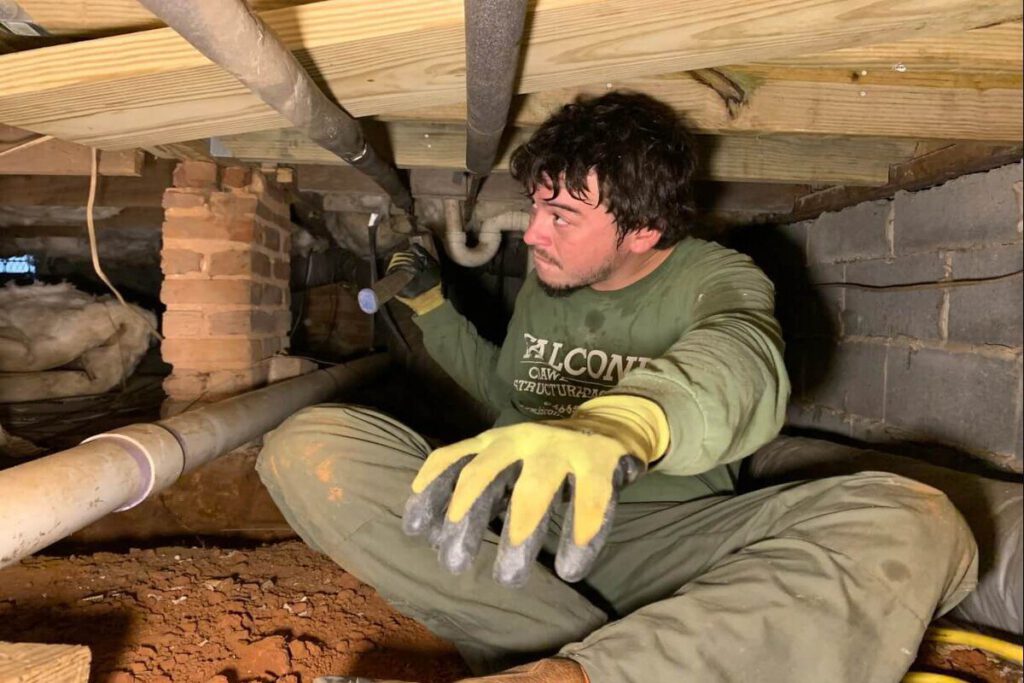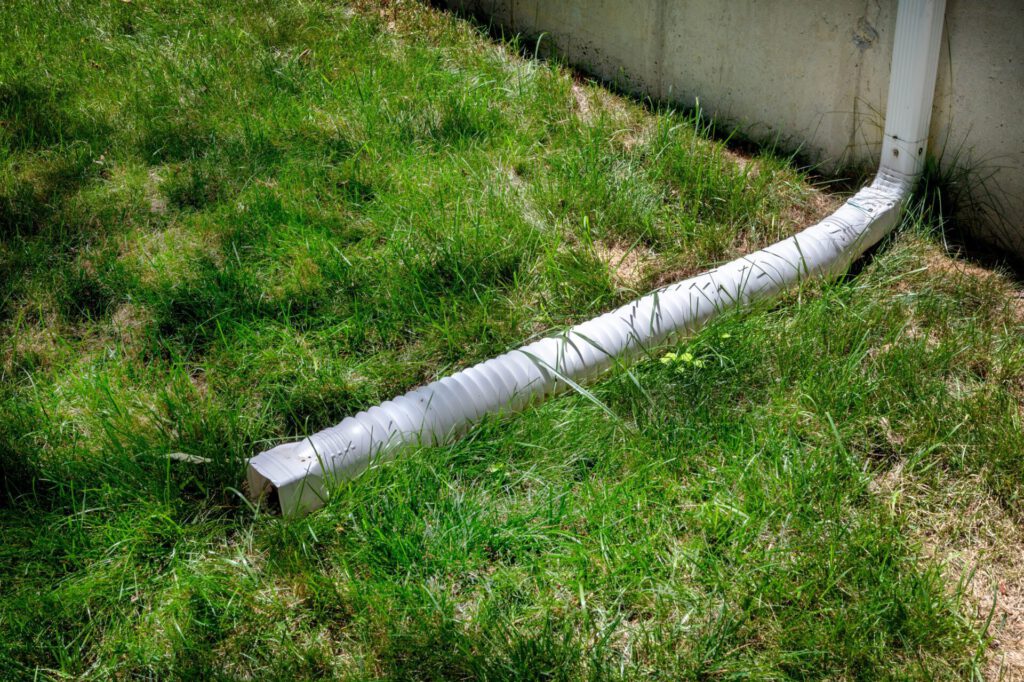Wood Rot: Your Crawl Space Hidden Enemy

Wood rot in your crawl space can become a significant threat. It can go undetected for a long time, leading to extensive foundation damage. This living fungus is not directly harmful to your family like black mold is, but it can contaminate the air and lead to an allergic reaction.
Sometimes called dry rot, wood rot feeds on the cellulose in the wood parts of your home’s foundation. The beams that form your crawl space are susceptible to this fungus and other moisture-related wood decay.
What Is Wood Rot?
Wood rot is the natural process of decomposing wood. It’s a headache for most homeowners because it causes structural issues by destroying support beams and posts, and making subflooring or joists unstable.
This condition occurs for several reasons. The most common causes include:
- Exposure to water vapor
- Plumbing leak that has gone undetected
- High humidity or moisture in the crawl space
- Poor ventilation
Inadequate plumbing and drainage and water underneath your home are other factors that contribute to wood rot.
Types of Wood Rot
Three types of wood rot may impact your home. One of the most common is brown rot. Brown rot causes the wood to shrink and turn brown, eventually disintegrating. It can spread from one area to another and thrives at temperatures between 65 and 90 degrees Fahrenheit.
White rot causes the wood to turn spongy and have a light yellow or whitish color. This fungus also flourishes at temperatures between 65 and 90 degrees Fahrenheit. Soft rot makes the wood resemble a honeycomb. It survives in temperatures between 0 and 110 degrees Fahrenheit.
How Wood Rot Attacks Your Home

Wood rot often develops in hard-to-reach areas of your crawl space. Its growth accelerates in excess water, meaning moisture or humidity can affect it. Sensitive areas include the following:
- Joists
- Beams
- Where subflooring meets joists
- Right around ductwork and HVAC floor registers
- Framing around doors, windows, vents, or other areas where moisture can enter
Even with the smallest areas of wood rot, these structural components can begin losing load-bearing capacity. The longer the problem goes unnoticed, the more extensive the damage becomes. If your structure was built with untreated wood, you may be at a greater risk of developing wood rot.
Identifying Wood Rot in Your Crawl Space

Routinely inspecting your crawl space with a flashlight will help you detect the presence of wood rot. However, if your home has been affected by flooding or a significant plumbing leak, it’s best to have a foundation repair expert do a professional inspection.
The most common red flags that alert you to the presence of wood rot in your crawl space include:
- Signs of condensation, moisture, or standing water in abnormal locations
- Constant musty odors
- Powdery buildup on wooden components
- White, brown, or yellow discoloration on beams, joists, or subflooring
- Gaps allowing water or humidity to enter the crawl space
- Indoor floors that begin sagging or feel squishy
You may also notice a decrease in indoor air quality because of the excess Fungal Spores infiltrating your home.
Eliminating Crawl Space Wood Rot
It’s important to remember that moisture must be present for the fungus to feed on. Dry wood does not encourage wood rot. To resolve your wood rot, you must identify where the moisture is coming from. After you have identified where the moisture is coming from, you can sometimes clean and treat the wood with a fungicide, or when it is too bad, you do have to replace the wood.
The fungicide must be applied to the affected area while drying out. It’s best to allow a professional to treat the timber because they have more effective products.
Rotted wood must be replaced when the damage is significant enough to compromise the stability of the material. If your structure has deep cracks traveling across the wood grain, wood being soft to touch, or wood that crumbles with tools easily, might have to be replaced.
Taking Action to Prevent Wood Rot

Preventive action is the best thing you can do to safeguard your home from wood rot. When left untreated, this fungus spreads and wreaks havoc on your foundation. Taking action to control the humidity and moisture is a crucial part of protecting your crawl space.
Invest in crawl space waterproofing to prevent moisture from entering the area in the first place. Hire a professional to install a vapor barrier to line the crawl space’s interior. These vinyl prevent moisture from entering through the walls, and ground vapors into the crawl space. This process of installing a vapor barrier is called an encapsulation.
Keep Wood Rot Out of Your Crawl Space for Good

Preventing moisture from entering your home and causing wood rot is essential to the integrity of your home. Falcone Crawl Space & Structural Repair is a leading team providing crawl space encapsulation.
If you’re feeling unsure about the wood rot in your crawl space, give Falcone a call. We’ll schedule an assessment and determine the best solution for your home.


